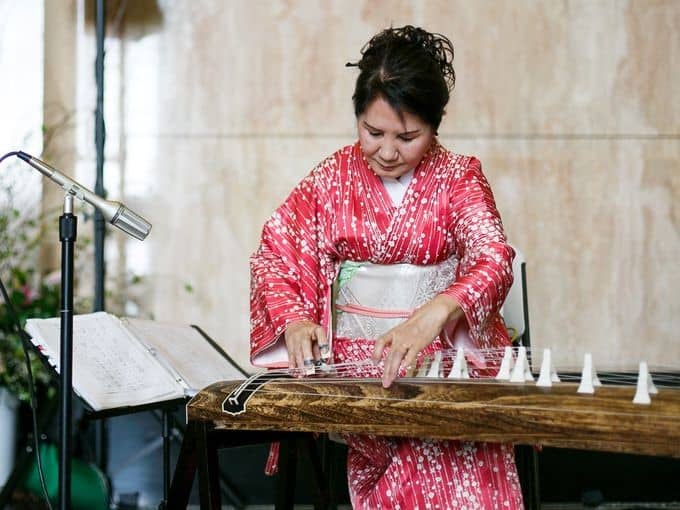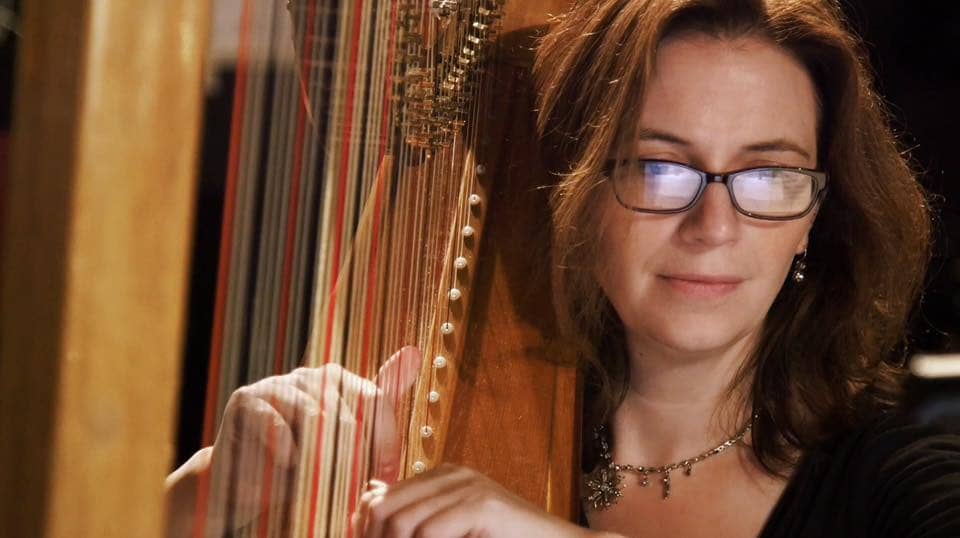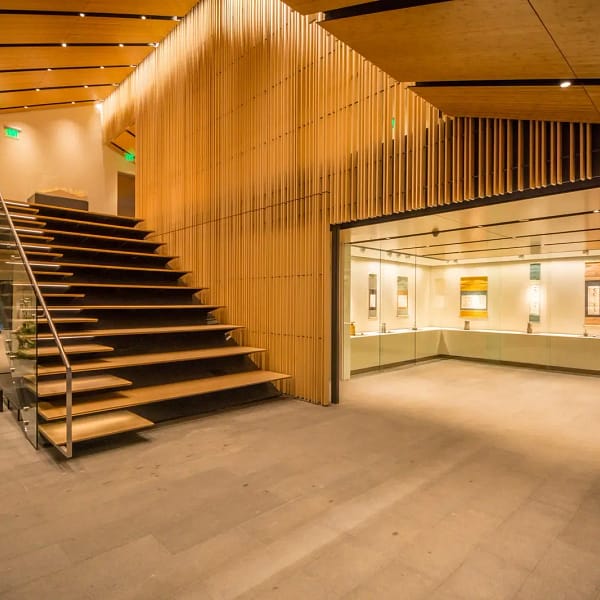
Enjoy a free koto and harp performance by Masumi Timson and Bethany Evans at 1:15pm at the Cathy Rudd Cultural Corner in the Jordan Schnitzer Japanese Arts Learning Center.
Artist Bio: Masumi Timson
Masumi Timson is a performer and instructor of the Koto and Shamisen – traditional musical instruments of Japan. She holds a Master’s Degree in Music with a specialization in the koto and shamisen from Seiha Conservatory of Japanese Traditional Music, one of the most prestigious koto schools in Japan. Masumi plays both classical and contemporary koto music, and also sings Japanese classical songs with koto and shamisen accompaniment. She also enjoys collaborating with various western musical instruments to explore a wide range of musical genres, from jazz and tango, to western classical compositions by Bach and Mozart. Masumi has participated in many recordings of Pink Martini, and has performed with the band at various venues around the world, including Carnegie Hall, the Hollywood Bowl, and the Grand Rex Theatre in Paris. Masumi is also a Japanese language professor and currently teaches Japanese language and culture at Chemeketa Community College in Salem, Oregon.
Artist Bio: Bethany Evans

Bethany Evans, a native of Salem, Oregon, began her music studies at age five. She began studying the harp four years later and found her passion. She received a Bachelor of Music in Harp Performance from the University of Arizona summa cum laude and graduated with a 4.0 from the University of Oregon’s Master of Music program in Harp Performance. She has studied with Marion Fouse, Suzanne McDonald, Carrol McLaughlin, and Laura Zaerr. Ms Evans also has a law degree from Willamette University College of Law. She has performed extensively throughout Europe and the United States and has multiple award-winning recordings. She has an active private teaching studio and is a member of the faculty of Western Oregon University and Chemeketa Community College as harp instructor as well as performing with orchestras around the northwest and at numerous private functions. She is also the principal harpist for the Salem Orchestra and the Portland Columbia Symphony Orchestra. Her greatest devotion is being a mom to her daughter, son, and muse for her husband, artist Kamron Coleman.
About the Koto
The standard Koto is a thirteen-string plucked zither. It was introduced to Japan from China through the Korean Peninsula in the 7th century. The instrument has been part of the Gagaku court ensemble for over one thousand years, gradually becoming popular among the merchant classes of the Edo period (1600-1868). An important member of the traditional Sankyoku ensemble, along with the three-string Shamisen and Shakuhachi (bamboo flute), the Koto developed further in a solo capacity, eventually gaining its place as one of Japan’s most prominent musical instruments. Today a varied repertoire along with a wide range of playing techniques provides a wonderful palette of sound textures, making the Koto appealing to audiences the world over. Learn more about the Koto.
Portland Japanese Garden would like to thank The Miller Foundation and Toshiba International Foundation for their support of arts and culture programming.


